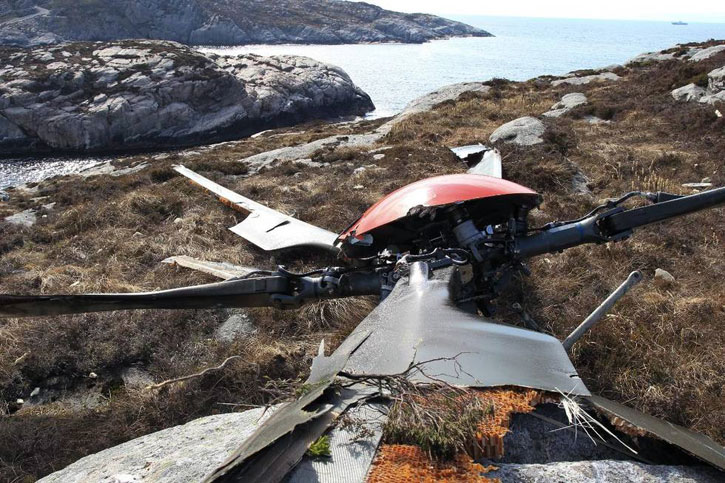
SUPER PUMA GEARBOX TO BLAME
By Anthony Tucker-Jones
Following the crash of Airbus Helicopters H225, LN-OJF at Turøy, Norway on 29 April the Accident Investigation Board Norway (AIBN) has ruled that that the H225’s Main Gear Box (MGB) is not safe.
In light of previous accidents the AIBN initially announced ‘the scenarios under consideration include failure of epicyclic module, suspension bar (lift strut) attachment and attached MGB conical housing.’
Last week examination of the recovered second stage planet gear ‘revealed features strongly consistent with fatigue’.
Alarmingly AIBN warned last Wednesday ‘The nature of the catastrophic failure of LN-OJF main rotor system indicates that the current means to detect a failure in advance are not effective.’
This means that there is no way of offering advanced warning of the Main Rotor Head and mast suddenly detaching from the H225. This is of very serious concern to both civilian and military operators.
In response last Thursday the European Aviation Safety Agency (EASA) said both the H225 and AS332 variants should not fly while the accident investigation is underway. The ban includes search and rescue flights, but does not appear to include military variants.
The H225M (formerly the EC225 Super Puma) is the nine ton class long range transport helicopter in Airbus’s extensive Cougar/ Super Puma family.
It is essentially a larger variant of the AS332 Super Puma (now the H215), which has been marketed for military use as the AS532 Cougar, (215M). All the Super Puma family are powered by two French built Turbomeca Makila turboshaft engines.
The Super Puma is deployed by at least thirty air forces worldwide. The H225 is also deployed by half a dozen countries in a maritime role, while a dozen countries employ it in its civilian configurations.
One of the key users is the French Army (Armée de Terre) and Air Force (Armée de l’Air). In total, according to the respected Flightglobal, the French operate about 120 Puma and 60 Super Puma variants.
A UK Ministry of Defence source said ‘the British Armed Forces do not operate the H225 and the ban does not affect the RAF’s Puma Mk.2 (AS330) fleet.’
However, these have new Turbomeca Makila 1A1 turboshaft engines and new gearboxes following a recent major upgrade designed to give thirty helicopters a ten-year life extension. The 1A1 offers a slightly lower performance than the 1A2 that powers Super Puma.
This work was conducted by Airbus at a cost of £220m. Around £45m was also spent on the engines, which power the AS332/532 Super Pumas. Another £35m was assigned to support the upgrade. This means the overall programme cost £300m.
After accidents in 2012 the gearbox fatigue on LN-OJF suggests that further modifications to the MGB will be needed before the H225 is given the all clear. The potential safety ramifications for military Super Pumas could be far reaching and safety checks will be going on behind the scenes.
















